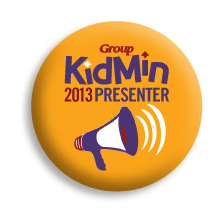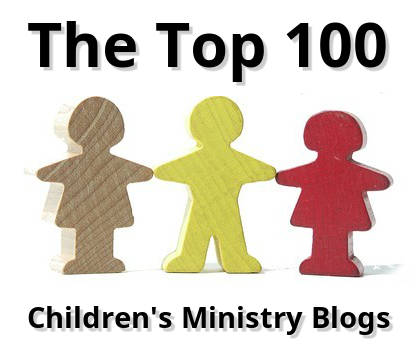
We’ve discussed a lot about the incredible, amazing brain these past few weeks. Now, I’d like to pull it all together to help you think through how to use brain research to understand the children of divorce.
To help you understand the hierarchical organization of the brain, I’m going to break it down into three main sections. Even though we can’t actually break the brain into just three parts, we’re going to pretend we can for our purposes in working with and ministering to the child of divorce. It is important to understand that the different parts of the brain work together and contribute to each other.
Three levels of the brain
- Lower level
The lower level, or the brain stem, deals mainly with survival issues and pain avoidance. The brain stem is always asking, “Am I safe?” In this state, the brain can only access three skills:
- Fight—hitting, kicking, pushing, physical aggression
- Flight—withdrawing, hiding, running, screaming
- Freeze—blankly staring, going immobile, panicking
All the brain stem can do is react. It can’t think through the situation. It can’t learn. It can’t problem solve.
We all know that for a newborn, safety is to be held, kept warm, and have his needs met. As the child grows, safety means seeing a parent or a caregiver close by. While many people think elementary-aged kids just need to be told they are safe, keep in mind that many children from divorced homes regress developmentally. Safety becomes paramount to them. Not only do they need to be told they are safe, but they need to feel it, see it, and experience it.
In one church, on the first night of DC4K (DivorceCare for Kids), a Safekeeper (what we call our leaders) reported that she began the discussion time when everyone was calm and ready to listen. However, when she used the word divorce, one little kid put his sweatshirt over his head. This is a perfect example of a child who is in the lower level of the brain and does not feel safe.
- Mid level
The mid level, or the limbic system, deals mostly with feelings and seeking pleasure. The limbic system represents the emotional states. It is always asking, “Am I loved?”
The developmental need is connection.
- Connections give children impulse control.
- Impulse control allows cooperation.
- Connections mean harmony, warm support, and pleasant feelings.
One time in DC4K, I was reading a story about a child who just realized that his dad didn’t know how to be a dad, and that’s why he left the marriage and the family. In my group was a fifth-grade boy. He had been surly and in general did not want to be in our group. When I read the part about the boy’s father, my fifth-grade friend sat right up and said, “So that’s why my dad left. It had nothing to do with me. It wasn’t my fault, and I bet he really does love me.” We confirmed that was probably true, and we affirmed our love and concern for him. That night was a big turnaround for that child. From that point on, he was a different kid, cooperative, loving, and funny.
- Upper level
The upper level, or the frontal lobe or the cortex, grasps the big picture by handling problem solving, learning, and novelty-seeking. The frontal lobe or the cortex is always asking, “What can I learn?”
This is the state we want the child’s brain to be in because in this state, the child can learn. The child has
- Impulse control
- Sustained attention
- The ability to plan, organize, and prioritize
Try to think of setting up your environment to accommodate these three brain levels.
- Safety—the brain stem. The environment is safe for everyone. “You are safe.”
- Connection—the limbic system. All emotions are accepted and acknowledged. “You are loved.”
- Problem solving—the cortex/frontal lobe. Problem solving is encouraged and taught. “You can make smart choices. You are in control. You are ready to learn.”
Example conversations
Brain stem: “Your face is going like this.” (Describe and mimic the action. Don’t make fun of the child’s action, but gently imitate the facial expressions or body language.)
Limbic: Wait for eye contact. Say, “You seem ______________________. Sometimes I feel the same way when I’m _______. (Put in whatever emotion you think the child is feeling. Be careful not to tell the child how he feels. And add empathy to the situation.)
Cortex: “You wanted ________________. It’s hard when ___________. You were hoping __________________.” Validate the child’s problem-solving ability. “You did it. You were able to handle that.”
Since we now realize how important it is for children to be in the upper level of the brain, some of you might ask why a child would go from the cortex down to the brain stem. The answer is that the brain stem is reactive, and the child’s brain is reacting to the situation. The child doesn’t have the wiring to get himself out of the brain stem. The child needs for adults to help.
Something else that comes into play is that even though we have all this information and are learning how to help children move from the lower levels to the upper levels of their brain where they can learn and problem solve, children will still “unhook” the brain if someone makes them think they are unworthy or their brain tells them they are unworthy.
When you minister to children by understanding the brain and applying these principles, then you will be able to reach their hearts. These heartfelt connections help the children of divorce feel your love, their parents’ love, and, above all, the love of Jesus Christ.
Here are the other articles in this series about the amazing, incredible brain.
Why is it important for me to understand the brains in kids of divorce?
Mirror neurons Part I
Empathy Part 2
Survival mode Part 3
4 essential drugs Part 4
The emotional part of the brain Part 5
How the brain learns Part 6
This article is updated and adapted from an article originally published on the Kids & Divorce blog on June 5, 2014.
DC4K blogs posts are great to use for training children’s leaders and volunteers and they are free. Subscribe to the DC4K blog here.
Want to learn more about how to start a DivorceCare for Kids group for the hurting children in your community? Click here.
Did you know DC4K blog articles are on Pinterest? Divorce & Kids, Children’s Pastors, Single Parents, etc. It’s all there. Check it out here
Follow Linda on Twitter, dc4klinda










Wow. Thanks for breaking down all the brain research and making it so accessible and applicable. I see clearly now that as DC4K safe keepers, our main role is to help each child feel safe AND loved so they can think and feel and heal.
You are welcome. I’m glad the information is helping. 🙂